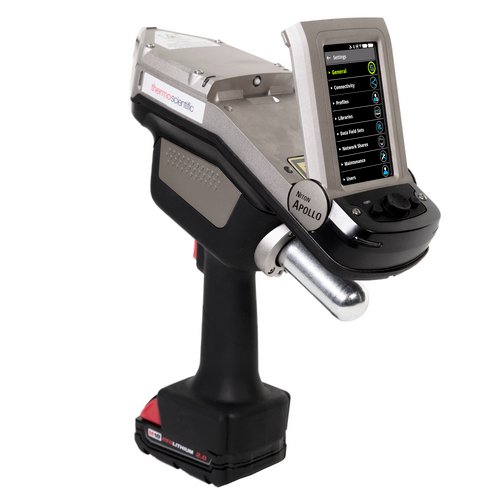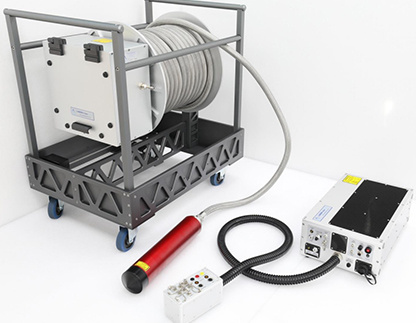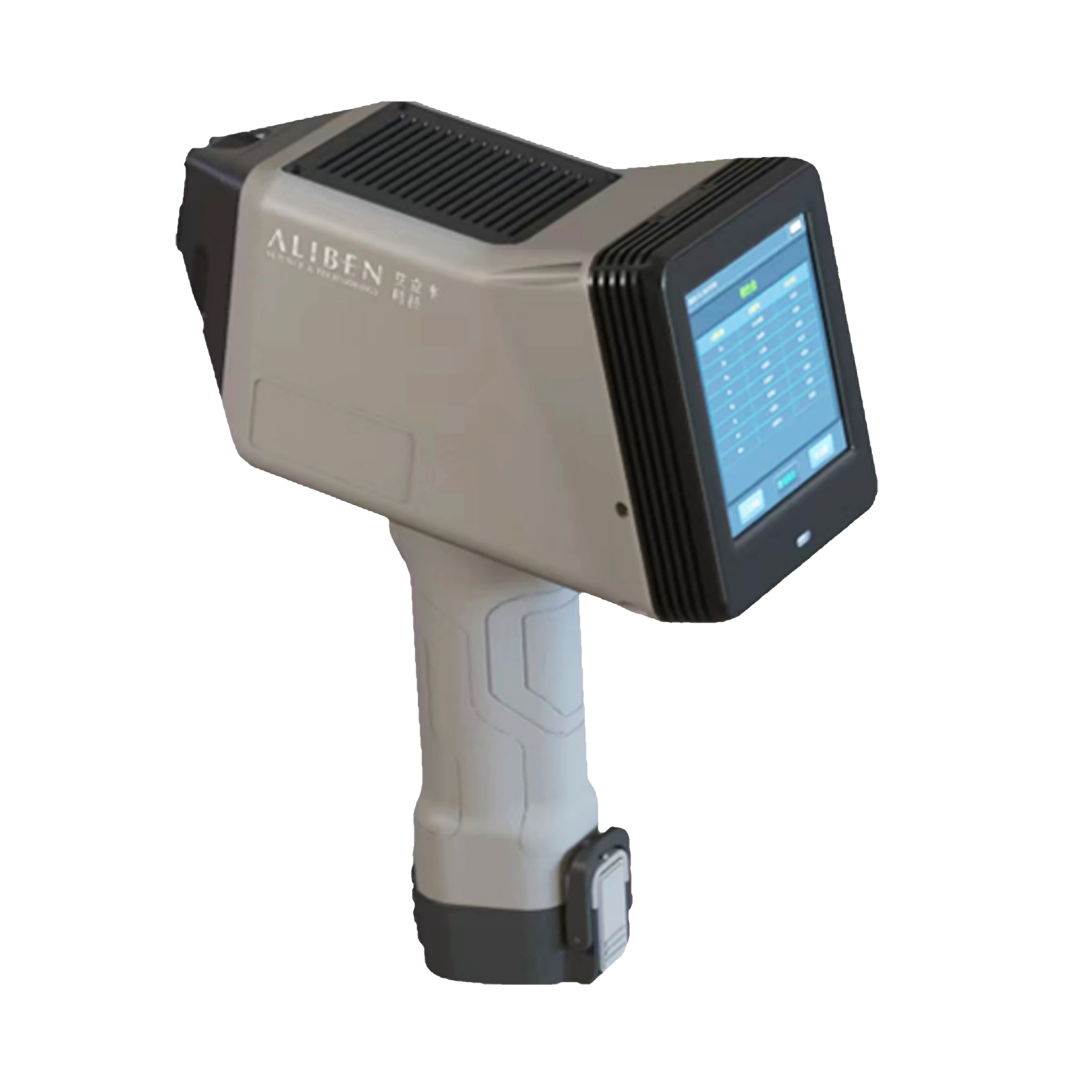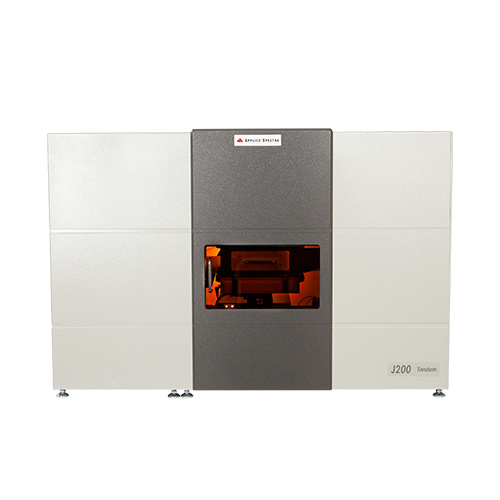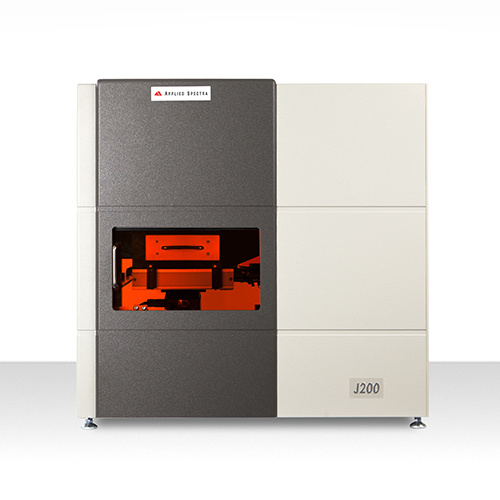
氟存在于许多矿物以及生物样品中。由于氟在牙科保健品,药物以及聚合物等人造物品中的广泛使用,因此,我们对氟的定性以及定性分析就显得尤为重要。氟分析在确定牙齿和骨骼的年龄,评估核反应堆受腐蚀影响层的成分变化以及了解生物体内的生化效应方面发挥着重要的作用。氟化学分析最常见的方法包括,通过离子选择电极法,容量分析法,离子色谱法或者气相色谱分析法,处理大量样品,将样品转化为适当的分析模式(溶解,分离,预浓缩等)。即使准备了实验所需的样品,传统的原子光谱学方法,例如,由于电感耦合等离子体广度发射光谱(ICP-OES)或电感耦合等离子体质谱(ICP-MS)具有较高的电离电位(17.42eV),和通常用作等离子体气体的Ar(15.76eV)相比,难以电离或激发氟。
激光诱导击穿光谱(LIBS)是一项替代传统方法的很好的技术,它具有速度快,多元检测,直接固体取样能力以及高分析能力等优点。在本技术说明中,我们演示了如何在氦气控制下,使用LIBS有效检测氟。
方案详情

Introduction Fluorine is found in many mineral and bio-logical samples. Both qualitative and quan-titative analysis of fluorine have becomeessential due to its widespread use in man-made items such as dental care products,pharmaceuticals, and polymers. Fluorineanalysis plays an essential role in determin-ing the age of teeth and bones, assessingcomposition changes in corrosion-affectedlayers of nuclear reactors, and understand-ing biochemical effects in living organisms.To date, the most common approaches forfluorine chemical analysis include extensivesample treatment to convert the sample intothe appropriate form for analysis (dissolu-tion, separation, pre-concentration, etc.) byion-selective electrodes, volumetric analysis,ion chromatography, or gas chromatog-raphy. Even with all the required samplepreparation for analysis, the conventional“go to"atomic spectroscopy methods, such as ICP-OES or ICP-MS, have difficulty ionizing or exciting fluorine, due to its high ionization potential (17.42 eV)as compared to Ar (15.76 eV) which is typically used as the plasma gas. Laser Induced Breakdown Spectroscopy (LIBS) is a great alternative technique to conventional approachesdue to many benefits that include rapid speed, multi-elemental detection, direct solid sampling capability, andhigh analysis throughput. In this technical note, we demonstrate the use of LIBS to efficiently detect fluorine, at685.6 nm, under a controlled helium atmosphere. Operating Parameters Applied Spectra Inc.'s J200 Tandem LA -LIBSInstrument ● 213 nm Nd:YAG laser (ns) Standalone LIBS measurement mode 85 um spot size Flex sample chamber with helium gas flow Laser sampling grid of 9 locations LIBS data analyzed with Applied Spectra DataAnalysis Software package Applied Spectra Inc.’s J200 Tandem LA- LIBS Instrument Calibration Method Figure 1 displays the LIBS spectrum collected fromanalyzing the NIST SRM120c (phosphate rock) (3.8wt.% F), with many fluorineemission lines detected.NIST SRM 1835 (borate ore)(0.348 wt. % F) and NISTSRM 2695 (fluoride in vege-tation, Low 0.0064 wt.% andHigh 0.0277 wt. %) were alsoanalyzed for fluorine detec-tion. However, the fluorinein the NIST SRM vegetation“low”sample was not detect-able. Therefore, three stan-dards, the phosphate rock,borate ore, and vegetationhigh, were used for method Figure 1. Example LIBS spectrum (50 laser pulses accumulated) acquired from NIST SRM 120c(Florida Phosphate Rock). evaluation and to derive limit of detection (LOD) and quantification (LOQ) in this experiment. Telephone: +1510.657.7679 Fax: +1510.657.7074 Sales Support: + 1510.657.7679 x410 NIST SRM 120c and NIST Vegetation High samples were used to create a set of calibration standards rang-ing from 0.028-3.8 wt. % F mixed with paraffin binder to dilute the samples. Advanced multivariate analysisinclufing a partial least squares (PLS) linear regression routine was performed to generate a calibration curvefor fluorine using the entire LIBS spectra from each sample instead of integrating specific emission peak(s)of interest, (Figure 2). Multivariate calibration was performed using the reference samples with known fluorinecomposition, described above. The multivariate approach can be more accurate, robust, and reliable in com-parison to univariate calibration. Multivariate calibration can be performed correctly, even when spectra areonly partially resolved, as can be seem for some emission lines in Figure 1. Figure 2. Calibration curve (multivariate) developed using Applied Spectra's Aurora (data analysis) software. Data points represent 50 laserpulses per location, 6 locations per samples over a 1 mm x1 mm area, and an 85 um spot size. Figures of Merit To test accuracy and precision of the multivariate model used for the calibration, two of the prepared standardsamples were treated as unknowns. Table 1 displays accuracy and precision results. The multivariate calibra-tion method shows promising results with accuracy < 10 % BIAS and precision < 4 % RSD. Table 1. Accuracy and precision for NIST borate ore and standards 4 and 7, (40% and 70% NIST 120c Florida Phosphate Rock), usingeach calibration method. Precision (%RSD) based on 6 replicates and accuracy (% BIAS) compared to certified values fromNIST certificate. Sample Actual Concentration (ppm) Measured Concentration (ppm) % RSD % BIAS Borate Ore 3480 3769±151 4.0 8.3 S 4 15280 15977±532 3.3 4.6 S7 26740 24200±825 3.4 -9.5 The detection limits were determined for fluorine. Since blanks are typically not available for laser ablationtechniques, the standard deviation of the background (noise) is used instead of the standard deviation of theblank. The LOD was found to be 135 ppm F and the LOQ was found to be 451 ppm F. Conclusion Laser-induced breakdown spectroscopy was demonstrated as a means for detecting and quantifying fluorine.LIBS is a standalone technique, but also can be used as a complementary method to laser ablation ICP-MS.This capability allows the tandem use of these technologies to be harnessed to quantify difficult elementssuch as fluorine. The LOD determined for this 213 nm LIBS configuration is on par with the LODs publishedfor fluorine detection via LIBS. Applied Spectra, Inc.Telephone:+1510.657.767946665 Fremont Blvd.Fax:+1510.657.7074APPLIEDSPECTRAFremont, CA 94538Sales Support:.+1510.657.7679x410Transforming the way the world does chemistry APPLIED SPECTRAwww.AppliedSpectra.comTransforming the way the world does chemistry Applied Spectra, Inc.Fremont Blvd.Fremont, CA PPLIED SP E CTRATransforming the way the world does chemistry 从NIST SRM 120c获得的LIBS光谱 激光诱导击穿光谱(LIBS)是一项替代传统方法的很好的技术,它具有速度快,多元检测,直接固体取样能力以及高分析能力等优点。在本技术说明中,我们演示了如何在氦气控制下,使用LIBS有效检测氟。
确定
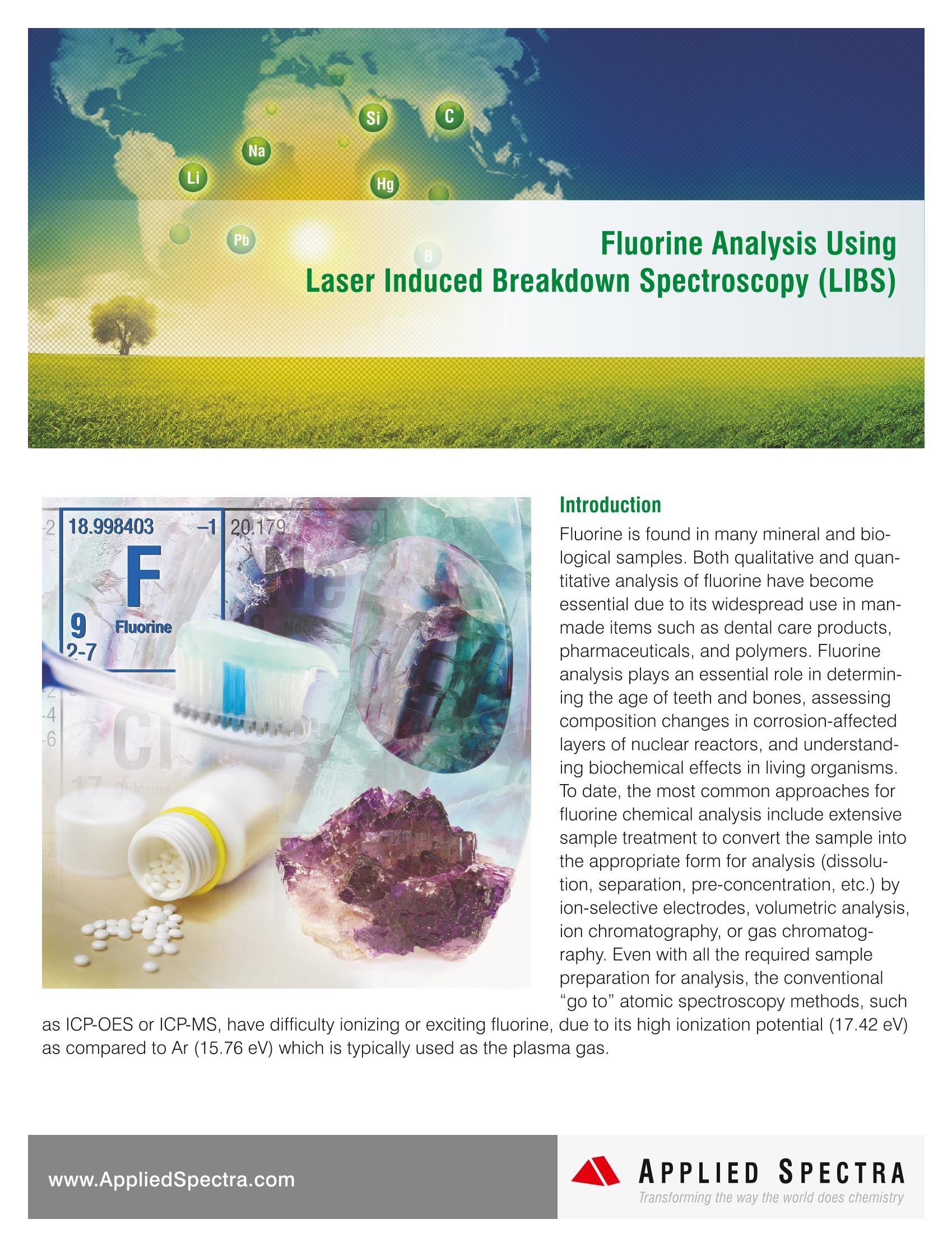
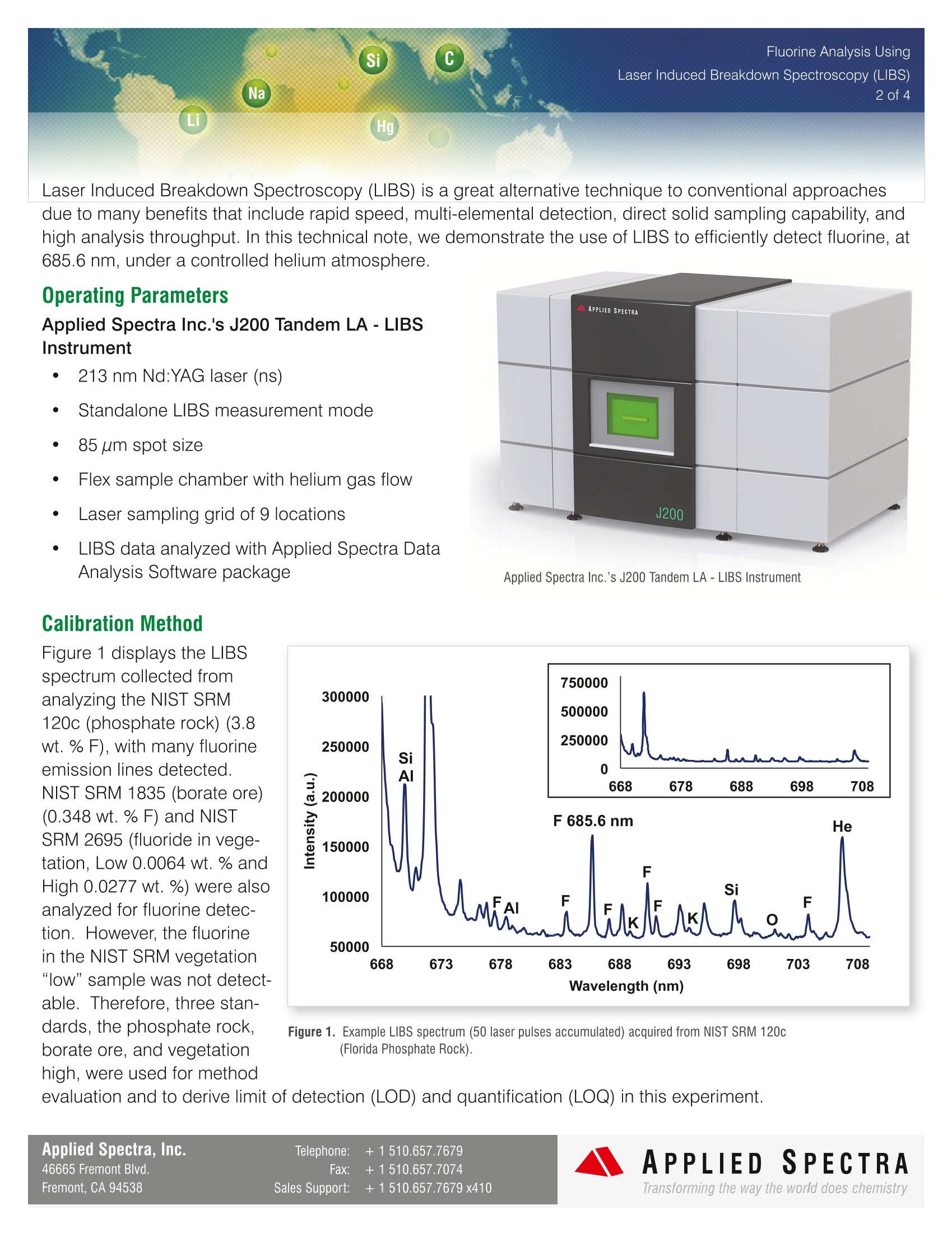
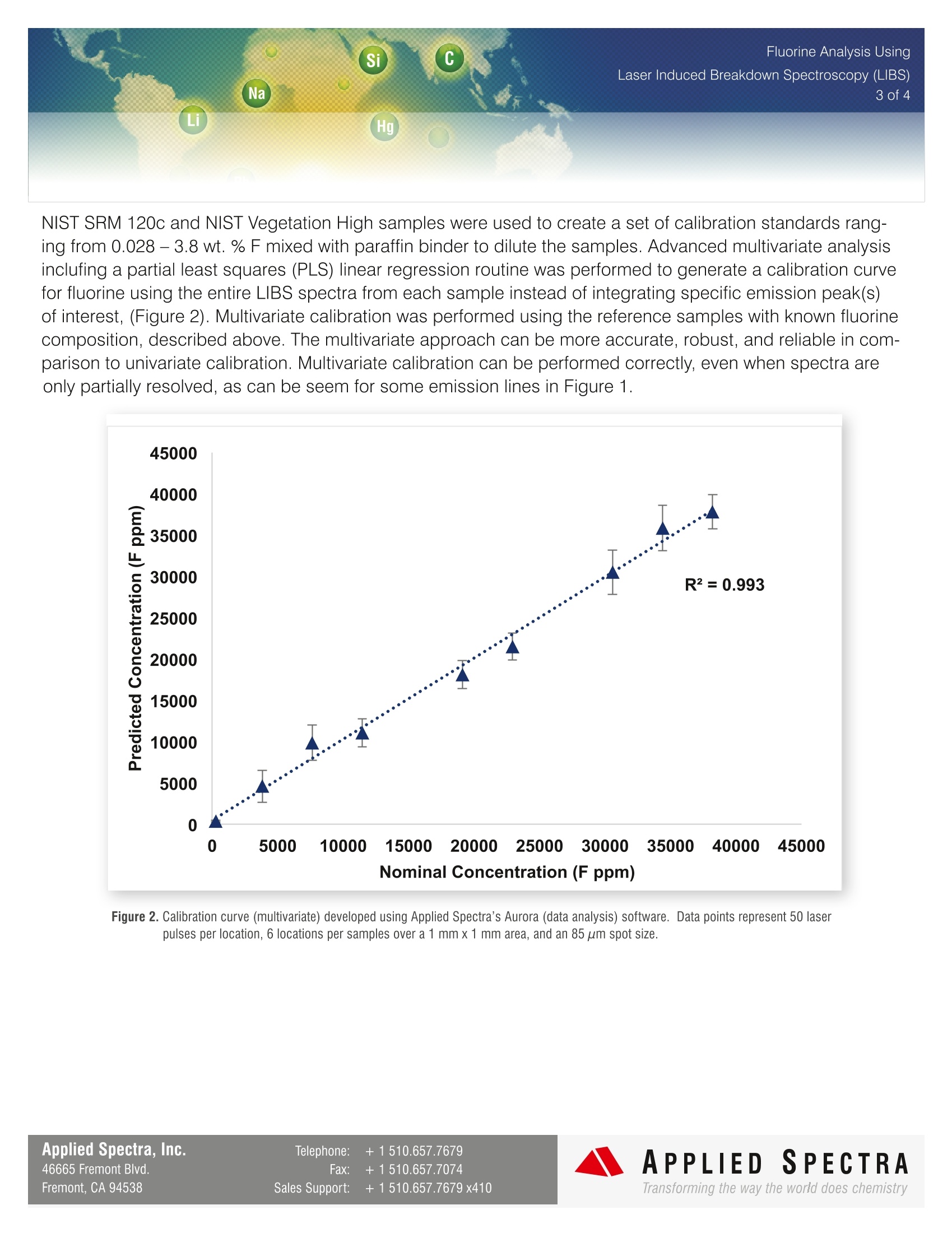
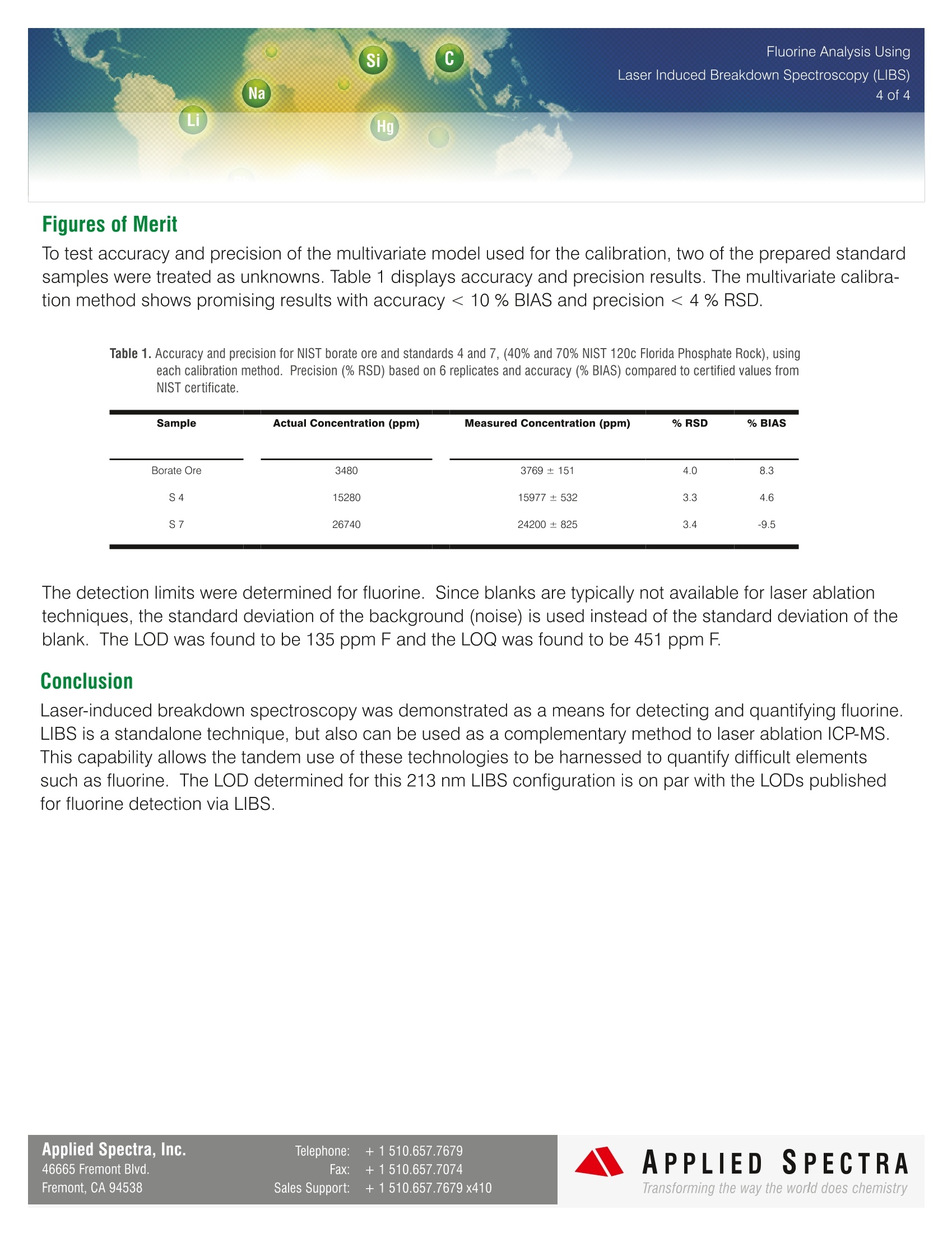
还剩2页未读,是否继续阅读?
北京富尔邦科技发展有限责任公司为您提供《磷矿,硼矿以及植物中氟检测方案(激光诱导击穿)》,该方案主要用于其他中氟检测,参考标准--,《磷矿,硼矿以及植物中氟检测方案(激光诱导击穿)》用到的仪器有美国ASI 激光诱导击穿光谱仪(LIBS)
推荐专场
相关方案
更多










